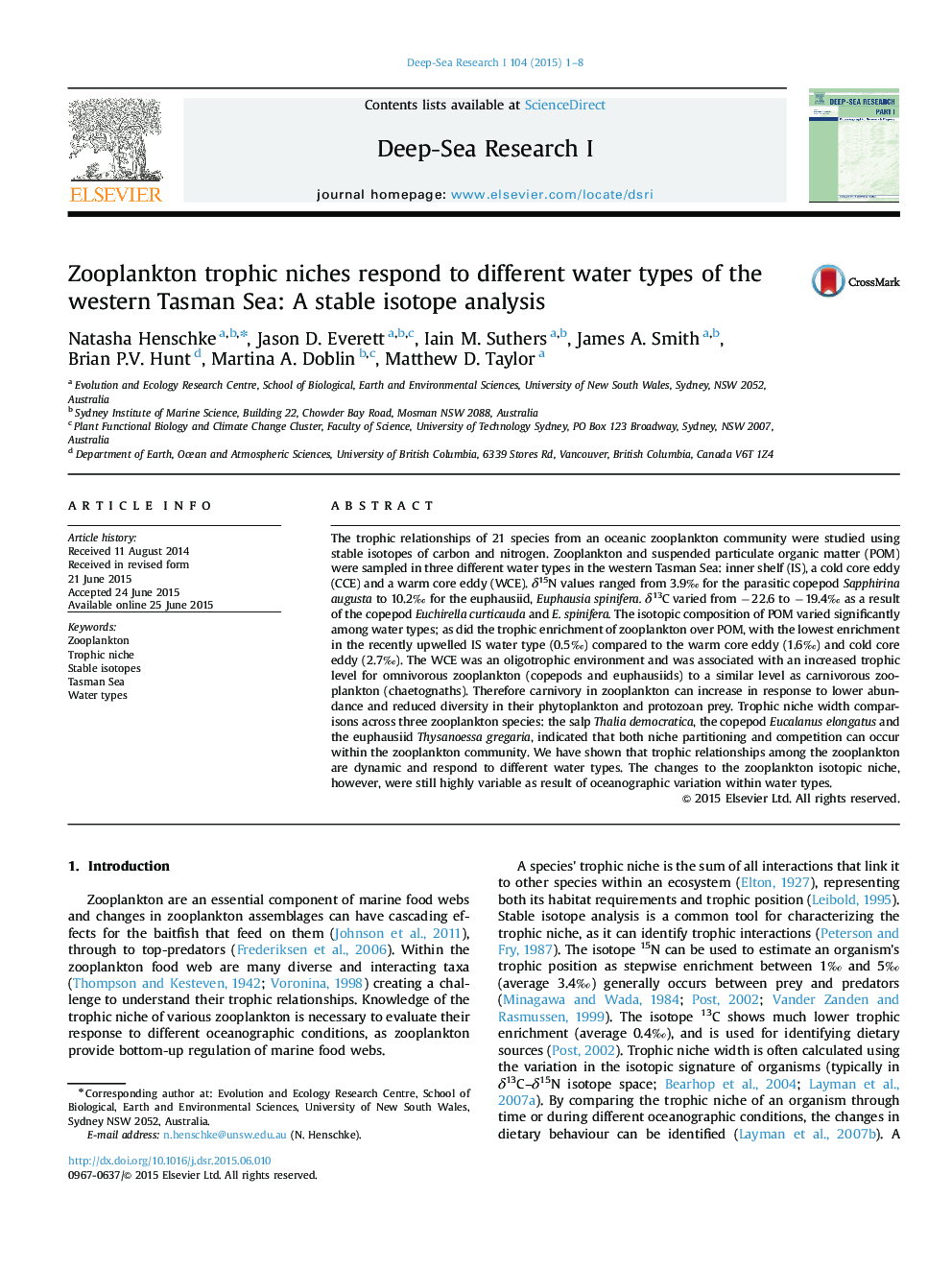| Article ID | Journal | Published Year | Pages | File Type |
|---|---|---|---|---|
| 6383409 | Deep Sea Research Part I: Oceanographic Research Papers | 2015 | 8 Pages |
â¢We compared the trophic niche of 21 zooplankton species across water types using stable isotopes.â¢We examined niche use behaviour of three potential zooplankton competitors.â¢Variations in trophic enrichment occurred as a result of different oceanographic conditions.â¢The oligotrophic warm core eddy was associated with increased carnivory in omnivores.â¢Zooplankton species can partition the trophic niche to avoid competition.
The trophic relationships of 21 species from an oceanic zooplankton community were studied using stable isotopes of carbon and nitrogen. Zooplankton and suspended particulate organic matter (POM) were sampled in three different water types in the western Tasman Sea: inner shelf (IS), a cold core eddy (CCE) and a warm core eddy (WCE). δ15N values ranged from 3.9â° for the parasitic copepod Sapphirina augusta to 10.2â° for the euphausiid, Euphausia spinifera. δ13C varied from â22.6 to â19.4â° as a result of the copepod Euchirella curticauda and E. spinifera. The isotopic composition of POM varied significantly among water types; as did the trophic enrichment of zooplankton over POM, with the lowest enrichment in the recently upwelled IS water type (0.5â°) compared to the warm core eddy (1.6â°) and cold core eddy (2.7â°). The WCE was an oligotrophic environment and was associated with an increased trophic level for omnivorous zooplankton (copepods and euphausiids) to a similar level as carnivorous zooplankton (chaetognaths). Therefore carnivory in zooplankton can increase in response to lower abundance and reduced diversity in their phytoplankton and protozoan prey. Trophic niche width comparisons across three zooplankton species: the salp Thalia democratica, the copepod Eucalanus elongatus and the euphausiid Thysanoessa gregaria, indicated that both niche partitioning and competition can occur within the zooplankton community. We have shown that trophic relationships among the zooplankton are dynamic and respond to different water types. The changes to the zooplankton isotopic niche, however, were still highly variable as result of oceanographic variation within water types.
